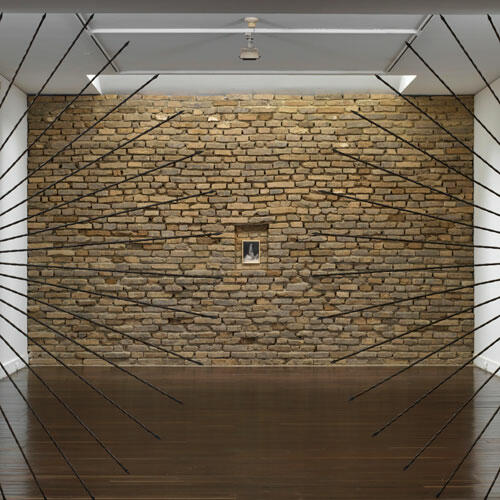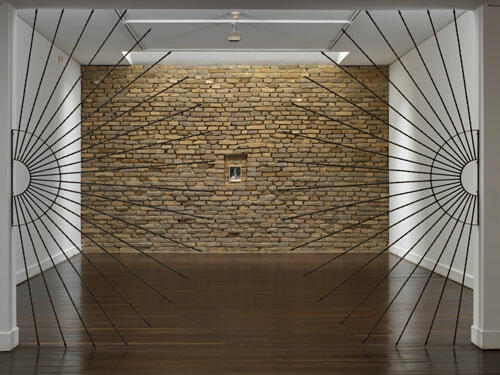Luis Roldán
Casas Riegner, Bogotá
One of the most important images of the Colombian cultural imaginary is that of the Tequendama Falls; nineteenth-century renditions by Alexander von Humboldt or Manuel María Paz have accompanied traveler’s books and books about Colombian history to our days. The importance of the place dates back to the Muisca legend, according to which it was created by Bochica, who used his staff to break the rock and release the water that covered the Bogotá Savannah. That undeniable historical weight contrasts with the current thin stream of putrid water, accompanied by a beautiful building, a hotel inaugurated in 1928 and later abandoned due to the gradual contamination of the Bogotá River.

And Roldán reflects on the memory of this place, and on the current state of this collective memory. An installation features two semicircular railings, identical to those that may be found at the hotel, placed opposite one another and barely leaving the space for a person to pass, but only just. Going past these railings, one reaches an adobe wall encircling a drawing of the Tequendama Falls that looks like a photograph and is tinged with certain yellowish tone, similar that resulting from the oxidation of the silver salts utilized in photography in the early 20th century. It is as if Roldán took us to the falls themselves, but once we are in front of them, firstly, we do not find the actual falls but a drawn representation and, secondly, this drawn representation is yellowish, and therefore refers us only to our own memory.
The exhibition is complemented by several sets of drawings that show the falls and the hotel but are apparently incomplete, compelling the viewer to strain his/her memory in order to complete the image. In a metaphor “in which memory must complete the image that it sees, just as it would have to if faced with the physical space: complete it with remembrances, since the present leaves much to be desired. What can be seen are fragments of an increasingly remote past reality,” as the text that accompanies the exhibit proposes.
-
 Tequendama Falls, 2011. Adobe wall, iron and drawing, 236.6 x 128 in. Courtesy Casas Riegner Gallery. Salto de Tequendama, 2011. Muro de adobe, hierro y dibujo, 596 x 325 cm. Cortesía Galería Casas Riegner.
Tequendama Falls, 2011. Adobe wall, iron and drawing, 236.6 x 128 in. Courtesy Casas Riegner Gallery. Salto de Tequendama, 2011. Muro de adobe, hierro y dibujo, 596 x 325 cm. Cortesía Galería Casas Riegner.




